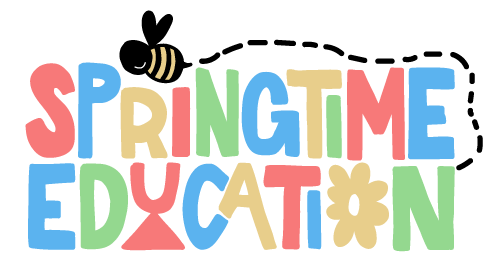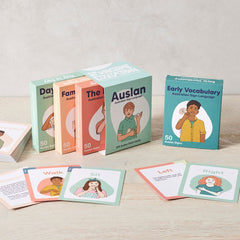Baby Sign Language - 35 Auslan Signs
- Description
- Safety Warning
- Disclaimer
Develop your baby's motor skills and reduce frustration levels with these 35 Australian Sign Language Flash Cards specifically tailored for your baby's needs.
Why sign language?
Babies develop motor skills much earlier than they develop the skills to control speech. You can use sign language to communicate with your baby from a much younger age, leading to fewer tantrums and lower frustration levels in both you and your baby.
Why Auslan?
Auslan is the sign language used by the deaf community within Australia. Using Auslan with your baby, rather than other sign languages such as ASL (American Sign Language) or BSL (British Sign Language), is a great way to promote inclusivity and the beautiful and unique Australian Sign Language.
Choosing your first signs
Begin with 4–6 signs that are commonly used in your household. 2–3 practical signs (such as milk, finished or more) and 2–3 fun signs (such as book, ball or teddy). Once your baby gets the hang of these signs, slowly add more into your daily routine. Avoid starting with too many signs or signs that look too similar (such as bat and milk) as it can make it difficult to differentiate between your baby’s actions hand movements as they begin to sign back to you.
When to start
You can begin introducing signs to your baby from 4–6 months. Typically, you’ll notice your baby beginning to sign back to you from 8–12 months. However, it’s important to remember that every baby has their unique pace of development. If you find that progress takes a bit more time, don’t worry. Just stay consistent and have confidence in the process.
How to start
Simply begin adding signs into your daily routine as you speak to your baby. For example, use the sign for ‘milk’ as you say ‘let’s have some milk’ before giving your baby milk or formula. This is a simple and effective way to begin learning. Don’t withhold items expecting your baby to sign back to you, keep it fun!
How to know if your baby is signing
As your baby develops, observe their hand movements and the potential signs they might be using based on the signs you have been teaching. For example, if your baby shakes their fist while eating, they may be signing ‘finished’ even though it doesn’t precisely resemble the sign for ‘finished’. It’s important to be patient, open and consistent as you learn together.
Each card features inclusive illustrations, handy hints, and learning examples of how to start signing with your baby.
Please be advised that children under the age of 3 years should be supervised while using this product. Sucking or chewing on paper or card may cause a choking hazard.
Our sign language products are designed for beginners to build a basic vocabulary and are not intended for learning a complete language. We have done our best to provide accurate 2D representations and descriptions of handshapes and movements for a dynamic language. When learning sign language as a complete language, it is recommended that our resources are to be used in conjunction with learning from a native user of the language.
You may also like:






















